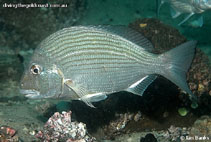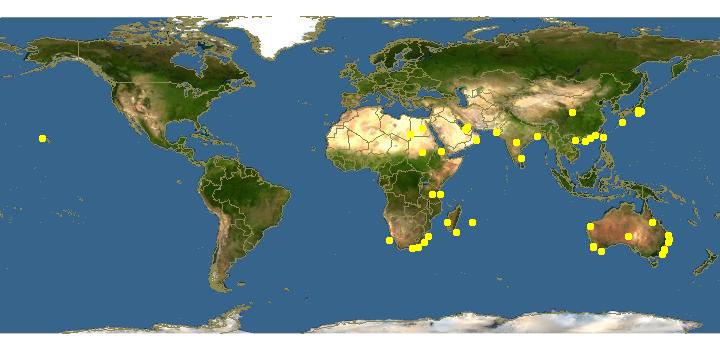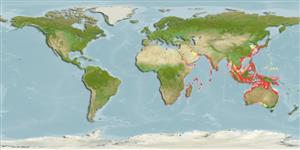http://www.fishbase.org/Summary/speciesSummary.php?genusname=Rhabdosargus&speciesname=sarba ---> http://192.134.151.83/Summary/speciesSummary.php?genusname=Rhabdosargus&speciesname=sarba
http://192.134.151.83/Summary/speciesSummary.php?genusname=Rhabdosargus&speciesname=sarba ---> https://fishbase.mnhn.fr/Summary/speciesSummary.php?genusname=Rhabdosargus&speciesname=sarba
https://fishbase.mnhn.fr/Summary/speciesSummary.php?genusname=Rhabdosargus&speciesname=sarba ---> https://fishbase.mnhn.fr/summary/Rhabdosargus-sarba.html
Rhabdosargus sarba, Goldlined seabream : fisheries, aquaculture, gamefish

You can
sponsor
this page
Common name (e.g. trout)
Genus + Species (e.g. Gadus morhua)
-

-
About this page
-
Languages
-
User feedbacks
-
Citation
-
Uploads
-
Related species
-


 Goldlined seabream
Add your observation in
Fish Watcher
Upload your
photos
and
videos
Goldlined seabream
Add your observation in
Fish Watcher
Upload your
photos
and
videos
Pictures
|
Videos |
Google image
 Rhabdosargus sarba
Rhabdosargus sarba
Picture by
Banks, I.
Teleostei (teleosts) >
Eupercaria/misc
(Various families in series Eupercaria) >
Sparidae
(Porgies)
Etymology:
Rhabdosargus:
Greek, rhabdos = stick + Latin, sargus = sargus (1591) (Ref.
45335
)
.
More on author:
Forsskål
.
Environment: milieu / climate zone / depth range / distribution range
Ecology
Marine; brackish; reef-associated; oceanodromous (Ref.
51243
); depth range 0 - 60 m (Ref.
30573
). Tropical; 36°N - 38°S, 19°E - 155°E (Ref.
57004
)
Indo-West Pacific: Red Sea and East Africa to Japan, China, and Australia.
Length at first maturity / Size / Weight / Age
Maturity: L
m
23.7
range ? - ? cm
Max length : 80.0 cm TL male/unsexed; (Ref.
3678
); common length : 45.0 cm TL male/unsexed; (Ref.
1724
); max. published weight: 12.0 kg (Ref.
1724
)
Dorsal
spines
(total): 11;
Dorsal
soft rays
(total): 12-13;
Anal
spines
: 3;
Anal
soft rays
: 10 - 11. Bright yellow mark above the pelvic base.
Inhabit coastal waters (Ref.
30573
,
44894
), usually entering estuaries (Ref.
44894
). Abundant in shallow water and often caught at the surf-line or in rock pools (Ref.
9987
). Larger, solitary fish sometimes enter brackish mangrove areas (Ref.
9987
). Juveniles in estuaries move into deeper water with growth (Ref.
4335
). Often in schools (Ref.
9710
). Feed on benthic invertebrates, mainly mollusks (Ref.
5213
) and aquatic macrophytes (Ref.
26055
). Popular angling species commonly captured with hook and line (Ref.
44894
). Marketed fresh (Ref.
5284
).
Normally sexes are separate but some individuals are protandrous due to geographical variation in sexual pattern (Ref.
103751
). Gonochorism is confirmed in Australia, and protandry in Asia (Ref.
103751
). Also Ref. 28504.
Bauchot, M.-L. and M.M. Smith
, 1984. Sparidae. In W. Fischer and G. Bianchi (eds.) FAO species identification sheets for fishery purposes. Western Indian Ocean (Fishing Area 51). volume 4. [var. pag.] FAO, Rome. (Ref.
3507
)
IUCN Red List Status (Ref.
130435
)
Least Concern (LC)
; Date assessed:
02 December 2009
CITES
Not Evaluated
Not Evaluated
Threat to humans
Harmless
Human uses
Fisheries: commercial; aquaculture: commercial; gamefish: yes
FAO - Aquaculture:
production
; ; Publication:
search
|
FishSource
|
Sea Around Us
More information
Countries
FAO areas
Ecosystems
Occurrences
Introductions
Stocks
Ecology
Diet
Food items
Food consumption
Ration
Common names
Synonyms
Metabolism
Predators
Ecotoxicology
Reproduction
Maturity
Spawning
Spawning aggregation
Fecundity
Eggs
Egg development
Age/Size
Growth
Length-weight
Length-length
Length-frequencies
Morphometrics
Morphology
Larvae
Larval dynamics
Recruitment
Abundance
BRUVS
References
Aquaculture
Aquaculture profile
Strains
Genetics
Electrophoreses
Heritability
Diseases
Processing
Nutrients
Mass conversion
Collaborators
Pictures
Stamps, Coins Misc.
Sounds
Ciguatera
Speed
Swim. type
Gill area
Otoliths
Brains
Vision
Tools
E-book
|
Field guide
|
Identification keys
|
Length-frequency wizard
|
Life-history tool
|
Point map
|
Classification Tree
|
Catch-MSY
|
Special reports
Check for Aquarium maintenance
|
Check for Species Fact Sheets
|
Check for Aquaculture Fact Sheets
Download XML
Summary page
|
Point data
|
Common names
|
Photos
Internet sources
AFORO (otoliths)
|
Aquatic Commons
|
BHL
|
Cloffa
|
BOLDSystems
|
Websites from users
|
Check FishWatcher
|
CISTI
|
Catalog of Fishes
:
genus
,
species
|
DiscoverLife
|
ECOTOX
| FAO - Aquaculture:
production
; ; Publication:
search
|
Faunafri
| Fishipedia |
Fishtrace
| GenBank:
genome
,
nucleotide
|
GloBI
|
Google Books
|
Google Scholar
|
Google
| IGFA World Record |
MitoFish
|
National databases
|
Otolith Atlas of Taiwan Fishes
|
PubMed
|
Reef Life Survey
| Socotra Atlas |
Tree of Life
| Wikipedia:
Go
,
Search
| World Records Freshwater Fishing |
Zoological Record
Estimates based on models
Preferred temperature (Ref.
123201
): 21.9 - 29, mean 28 °C (based on 1662 cells).
Phylogenetic diversity index (Ref.
82804
): PD
50
= 0.5156 [Uniqueness, from 0.5 = low to 2.0 = high].
Bayesian length-weight: a=0.01950 (0.01622 - 0.02344), b=2.96 (2.91 - 3.01), in cm total length, based on LWR estimates for this species (Ref.
93245
).
Trophic level (Ref.
69278
): 3.3 ±0.47 se; based on food items.
Resilience (Ref.
120179
): Medium, minimum population doubling time 1.4 - 4.4 years (Assuming tm=2-4).
Fishing Vulnerability (Ref.
59153
): Moderate to high vulnerability (52 of 100).
Climate Vulnerability (Ref.
125649
): Very high vulnerability (88 of 100).
Price category (Ref.
80766
):
Very high
.
Nutrients (Ref.
124155
): Calcium = 34 [15, 69] mg/100g; Iron = 0.537 [0.280, 1.105] mg/100g; Protein = 19.7 [18.4, 21.1] %; Omega3 = 0.114 [0.068, 0.201] g/100g; Selenium = 39.8 [20.0, 80.7] μg/100g; VitaminA = 26.9 [6.4, 109.3] μg/100g; Zinc = 0.956 [0.602, 1.420] mg/100g (wet weight);
Back to Search
Random Species
Back to Top
Accessed through:
Not available
FishBase mirror site :
localhost
Page last modified by :
mrius-barile
- 20 July 2016
Fatal error
: Uncaught ArgumentCountError: Too few arguments to function checkEcotox(), 1 passed in /var/www/html/summary/speciessummary.php on line 2304 and exactly 3 expected in /var/www/html/includes/speciessummary.lib.php:2579 Stack trace: #0 /var/www/html/summary/speciessummary.php(2304): checkEcotox() #1 {main} thrown in
/var/www/html/includes/speciessummary.lib.php
on line
2579
|






